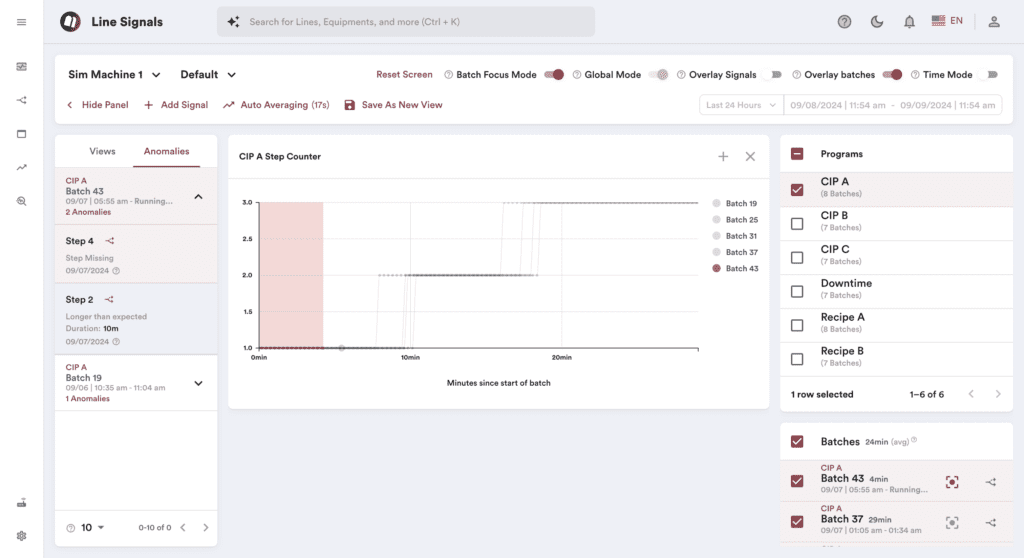Manufacturing is a complex world of precision and productivity, and in this dynamic landscape, finding ways to reduce production costs is a constant pursuit. As a software company eager to impact the manufacturing industry, we’d like to shed light on how digital tools can play a pivotal role in achieving cost efficiency.
Manufacturers worldwide constantly seek ways to enhance their processes, streamline operations, and reduce production costs. This article provides an outsider’s perspective, offering insights into why reducing production costs is crucial, how digital tools outshine traditional methods, and what digital tools are currently available to manufacturers for achieving these goals.
Why Reduce Production Costs?
Before we discuss digital tools and their role in cost reduction, let’s first explore why reducing production costs is a paramount goal for manufacturers.
Competitive Advantage
Competition is fierce in today’s global marketplace. Manufacturers must strive to keep their products affordable while maintaining quality. Reducing production costs can result in more competitive pricing, allowing manufacturers to capture a larger market share.
Profitability
Higher production costs mean lower profit margins. By lowering these costs, manufacturers can increase their profits, which can be reinvested in innovation, expansion, and other business areas.
Market Flexibility
Cost-efficient production allows manufacturers to respond more effectively to market fluctuations and changing customer demands. It provides the agility to adjust swiftly to new trends and opportunities.
Sustainability
Manufacturers can also enhance their sustainability efforts by reducing waste, energy consumption, and raw material usage. This resonates positively with environmentally conscious consumers and regulatory bodies.
Risk Mitigation
Reducing costs can buffer against economic uncertainties. A leaner, more cost-efficient operation is better prepared to weather economic downturns and market volatility.
Digital Tools vs. Non-Digital Methods
Now, let’s address the central question: why are digital tools more effective at reducing production costs than non-digital methods?
Data-driven decision-making
Digital tools allow manufacturers to track production in real-time and Collect, process, and analyze vast amounts of data. This enables data-driven decision-making, helping identify inefficiencies and cost-reduction opportunities.
Automation and Efficiency
Automation is a hallmark of digital tools. They can streamline repetitive tasks, optimize resource allocation, and reduce human error, leading to increased production efficiency and reduced labor costs.
Optimized Resource Utilization
Digital tools can monitor real-time equipment performance, energy consumption, and material usage. This data helps optimize resource utilization and reduce waste.
Predictive Maintenance
Predictive maintenance, powered by digital tools and IoT sensors, can prevent costly machine breakdowns and unplanned downtime, reducing maintenance and repair costs.
Inventory Management
Digital tools provide better inventory visibility, helping manufacturers maintain optimal stock levels. This reduces carrying costs and the risk of stockouts.
Quality Control
Digital tools like computer vision systems can enhance quality control by identifying defects in real time and reducing rework and material waste.
Available Digital Tools help Reduce Production Costs
The market is brimming with diverse digital tools that can aid manufacturers in reducing costs. Here are some of the key digital tools currently available:
Manufacturing Execution Systems (MES)
MES software helps manufacturers manage and control real-time production processes. It offers work order management, scheduling, and performance analysis features.
IoT Sensors and Devices
The Internet of Things (IoT) is pivotal in reducing production costs. Sensors and devices attached to machines and products collect performance, location, and condition data, aiding in resource optimization and predictive maintenance.
Data Analytics and Machine Learning

Advanced analytics and machine learning algorithms can uncover insights from production data, helping identify inefficiencies and improvement areas.
Energy Management Systems
They can enable manufacturers to monitor and optimize energy usage, reducing operational costs and enhancing sustainability efforts.
Supply Chain Optimization Software
Optimizing the supply chain ensures efficient procurement, reducing lead times and costs.
Automation and Robotics
Automation technology can replace manual labor in various manufacturing processes, leading to higher efficiency and cost savings.
How to Reduce Cost of Production with AI
As an AI company, it’s appropriate that we expand upon how data analytics and machine learning can help manufacturers reduce production costs.
Why AI
First, let’s consider why AI could be an amazing digital tool for helping manufacturers reduce production costs.
In the dynamic landscape of modern manufacturing, the integration of Artificial Intelligence (AI) has emerged as a game-changer.
Predictive Maintenance
One key avenue for cost reduction lies in predictive maintenance powered by AI. By implementing sensors and machine learning algorithms, manufacturers can predict equipment failures before they occur, enabling timely maintenance and minimizing downtime.
This not only extends the lifespan of machinery but also avoids the costly consequences of unexpected breakdowns.
Optimization of Production
AI-driven optimization of production schedules using production monitoring is another impactful strategy.
Machine learning algorithms can analyze historical production data, demand forecasts, and resource availability to generate optimized schedules that maximize efficiency and minimize idle time.
This ensures that resources are utilized optimally, reducing unnecessary overtime and enhancing overall productivity
Quality Control
Quality control is a critical aspect of manufacturing, and AI plays a pivotal role in enhancing it while reducing costs. AI tools like MontBlancAI can help manufacturers detect anomalies in production data patterns and alert anyone in the factory when something seems wrong.
This can stop production as soon as an error (or anomaly) is detected, which can avoid additional losses due to continuing production with defective raw ingredients and/or defective parameters in the production lines.
Why Reduce Production Costs
Now, let’s emphasize why reducing production costs matters from the perspective of both manufacturers and the broader economy.
Manufacturers Benefit:
- Improved Competitiveness: Cost reduction makes products more competitive in the market.
- Increased Profit Margins: Reducing costs directly boosts profits.
- Enhanced Innovation: Savings can be reinvested in research and development.
- Greater Agility: Cost-efficient operations can respond better to market changes.
The Broader Economy Benefits:
- Job Creation: As manufacturers become more competitive, they can expand and create more job opportunities.
- Price Stability: Reduced production costs can help stabilize prices, benefiting consumers.
- Economic Growth: Cost-efficient manufacturing contributes to overall economic growth.
- Sustainability: Cost reduction often aligns with sustainability goals, benefiting the environment.
Challenges in Reduce Production Costs
While digital tools offer numerous advantages, implementing cost-reduction strategies can pose challenges:
- Initial Investment: Acquiring and implementing digital tools can require a substantial upfront investment.
- Integration Complexity: Integrating new digital tools with existing systems can be complex and require technical expertise.
- Data Security: Ensuring the security of sensitive production data is crucial to prevent breaches or unauthorized access.
- Resistance to Change: Employees may resist new technologies or processes, affecting adoption rates.
In conclusion, as a software company venturing into the world of manufacturing, we recognize the pivotal role that digital tools play in helping reduce production costs. Manufacturers can leverage these tools to improve efficiency, competitiveness, and profitability while contributing to broader economic growth and sustainability. While challenges may arise in the journey to cost reduction, the benefits of embracing digital tools and strategies far outweigh the obstacles. Manufacturers can embark on a path to cost efficiency and long-term success by taking practical steps and embracing innovation.


